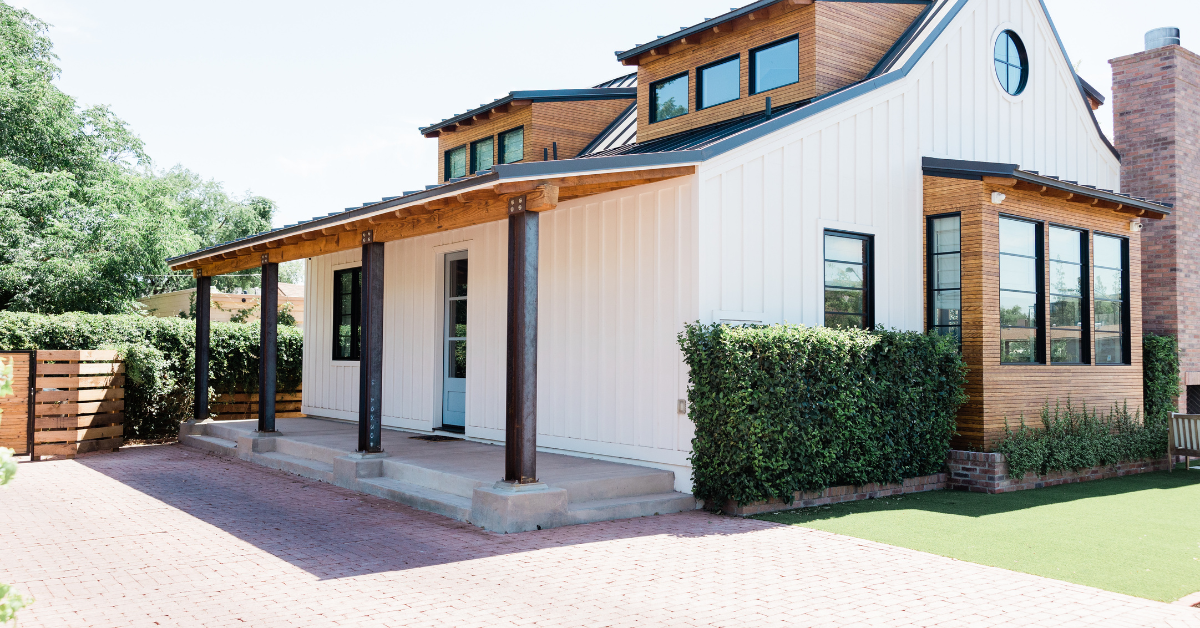
The Best Solutions for Weatherproofing the Exterior of Your Home

*Collaborative Post
Hasn’t the weather been unpredictable recently? After a winter of endless storms and showers, we’re still dealing with mixed forecasts. And because of climate change, our weather is likely to be even more unpredictable in the future.
That’s why it’s more important than ever to make sure our homes can cope with everything that’s thrown at it. But how do we make sure our homes can handle strong winds and heavy rain? In what ways can we improve our houses, so they standup to extreme conditions and keep us warm and dry inside?
Here’s some of the best solutions to consider.
Protect the walls
Render has been used for a long time to help protect walls from the elements. But even though it’s an ancient technique, it’s still one of the best ways to protect vulnerable walls from the elements.
This extra layer adds strength and durability to walls and can help to stop water penetrating the walls. It also helps to insulate the home. A lime render is best for old houses as this allows the walls to breathe and is more resistant to cracking. For modern homes in exposed areas, silicone render may prove a good choice as it offers a high level of waterproofing and is less prone to algae growth. So, it can keep your home protected and looking good.
Alongside your render, it’s worth considering adding a layer of external insulation. This will help your home to stay warm during bad weather and keep cool in the summer, so your home is comfortable year-round.
Bolster your roof’s defences
If you live in an area prone to high rainfall, then you might want to consider swapping flat roofs for pitched ones, to help your home handle the water better. But that’s not all you can do.
Fascia and soffits bear the brunt of a lot of the harsh weather, particularly when homes are in exposed locations. This means timbers are prone to decay if they’re not properly maintained. Capping fascias and soffits can help protect them, adding a layer of defence to your home’s exterior.
Similarly, concrete roof tiles can be painted with a waterproof coating that not only rejuvenates their appearance but improves their water resistance and durability. It also slows down the growth of lichen and moss.
Another way to help protect your roof is to add ventilation and insulation. This will help to control temperatures and moisture in your loft, protecting the timbers. Along with helping to maintain your roof, it can also stop ice dams forming on roofs in homes that are located in colder parts of the country.
Upgrade doors and windows
We can often feel the effects of cold and windy weather inside the home when we’re near the doors and windows. They’re typically the weak points in the home’s exterior. So, upgrading doors and windows is a sensible way to weatherproof your home. It will keep you warmer and reduce your energy bills.
Triple glazing is a great choice for homes exposed to the worst of our weather. It quietens howling winds and with two insulating pockets, it creates a better thermal barrier. So, you’ll lose less heat through them. They’re also better than double glazing at keeping the sun’s rays out, enabling you to keep your home cooler in summer.
Upgrading your doors can have a similar effect. To find a thermally-efficient door, look for one with a low U-value. Between 0.9 and 1.2 is considered good. New doors may also have a traffic-light style Door Energy Rating. The best rating for a door is A++ but anything higher than a B should perform well.
Aside from being thermally-efficient, external doors need to be waterproof and durable to withstand harsh conditions. Some of the best composite doors feature reinforced steel and hardwood frames and a glass-reinforced plastic outer skin. This provides excellent strength and durability, making this type of door worth consideration when weatherproofing your home.
Improve drainage
Managing rainfall is an important part of weatherproofing a house. That’s why you need to make sure your gutters and downpipes are working effectively. Although keeping them clean helps, it’s not the only way to maintain them.
Sometimes it’s necessary to rehang or repair sections of sagging guttering, so water runs in the right direction. And if you have a steeply-pitched roof or a large roof area, it can sometimes be prudent to add in more downpipes to ensure your gutters can handle the amount water coming off it.
To fully protect your home though, it’s not just about channelling the water down safely – it’s making sure that water drains away at ground level. Depending on your home, there are a few ways to reduce the risk of flooding. Keeping drains clear is just one way to do this.
If your rainwater goes into a soakaway, rather than the sewer, it’s important to make sure it’s designed to handle heavy rainfall and has filters to stop it getting blocked up. If you have a lot of hardscaping and impermeable surfaces such as tarmac, it’s even more important to make sure you have adequate drainage channels to stop the build-up of surface water and reduce the risk of flooding.
*This is a collaborative post. For further information please refer to my disclosure page.




